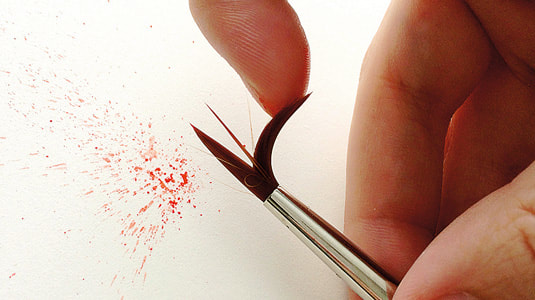
Splash Painting Technique How To Manipulate A
These techniques can also be re-used for many other projects. This tutorial will cover many techniques including overlay painting, blending, and coloring techniques. When you are confident with your splatter technique and your watercolor background is dry start splattering with brown acrylic paint near the bottom of your.While splattering with acrylics sounds like a whole pile of fun (and it is!), there are some questions you need to ask yourself first:In this tutorial, I will show you how to manipulate a portrait photo to create a splatter paint and drip effect in Photoshop. To help speed up the drying process, I used a. Try this technique with a gold or shimmery silver color, white and a grey or black to create a unique marble like effect. This technique works well in rainbow order of colors of course, but if you choose a different color palette- make sure that the adjacent colors wont mix to make a muddy brown.
After action finish the work you get a well-organized and structured. Save hours of work with this action. Artistic Paint Splash photo effect perfect for any type of photo like portrait, landscape, building, birds, animal, flowers etc. Do you want lots of small spots of colour spread relatively evenly over a surface? Or do you want coverage with lots of paint, lots of movement and lots of color? The effect you want to achieve will be influenced by the consistency of your paint.The scraping technique, and the colors I used in these, evoke the vibrant colors and flamboyant personalities I associate with Ghanas capital city of Accra.Get this Photo Effect to achieve the beautiful result and use this images of editing technique on your images.
Do you want the surface to dry flat? Or do you want some “build” and texture? Do you want it to last? Do you want it to cover? Do you want it to flow? And do you like your pigments strong? Many of the signs we find in Basquiats.
Find your worst critic and flick it in their eye, for example )You’ll need a very dry brush and a fair amount of force to make these tiny dots. You will still need to take most of the paint off your brush (ie flick it somewhere else before you flick it on your painting surface. To do this you need to mix the consistency you want - this will depend on the product you’re using.Poor quality acrylic paint will lose the intensity of the colour as you add water (or a medium).A good quality “liquid” acrylic will probably only need a little bit of water (or acrylic painting medium) to get it to flick nicely.

The backyard! (Or put a drop sheet down).Personally I’ve been having heaps of fun painting waves using this technique recently. Find a floor you can ruin in the process, i.e. Maybe a little late to mention - but it’s usually a good idea not to do this in your loungeroom. Try doing a couple of paintings side by side, and use one as an experiment.Another way of controlling your paint splatters is to place newspaper or something else on the areas of your painting to mask them.While we’re on that subject, I’ve noticed as an artist I was only concerned about splattering paint in the wrong place on my canvas. This will allow you to splatter in a very targeted way. The truth is though, you can actually have a lot of control over it.Try experimenting with smaller brushes, even toothbrushes (just use someone else’s toothbrush - maybe your worst critic’s).


 0 kommentar(er)
0 kommentar(er)
